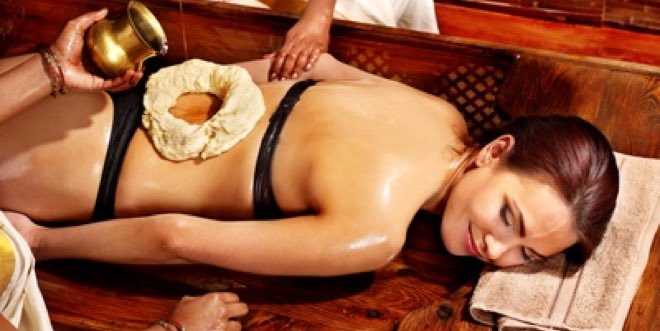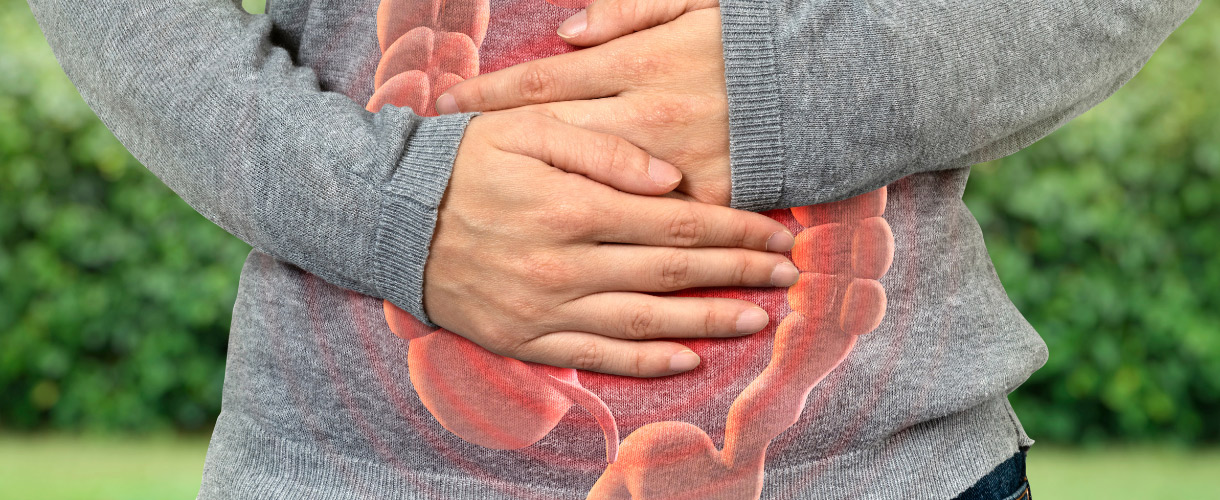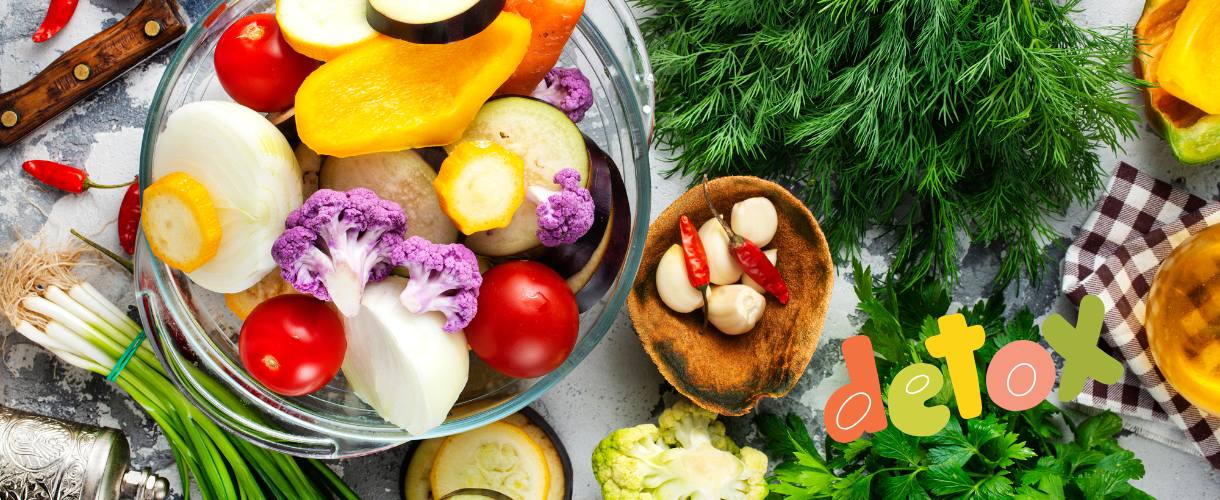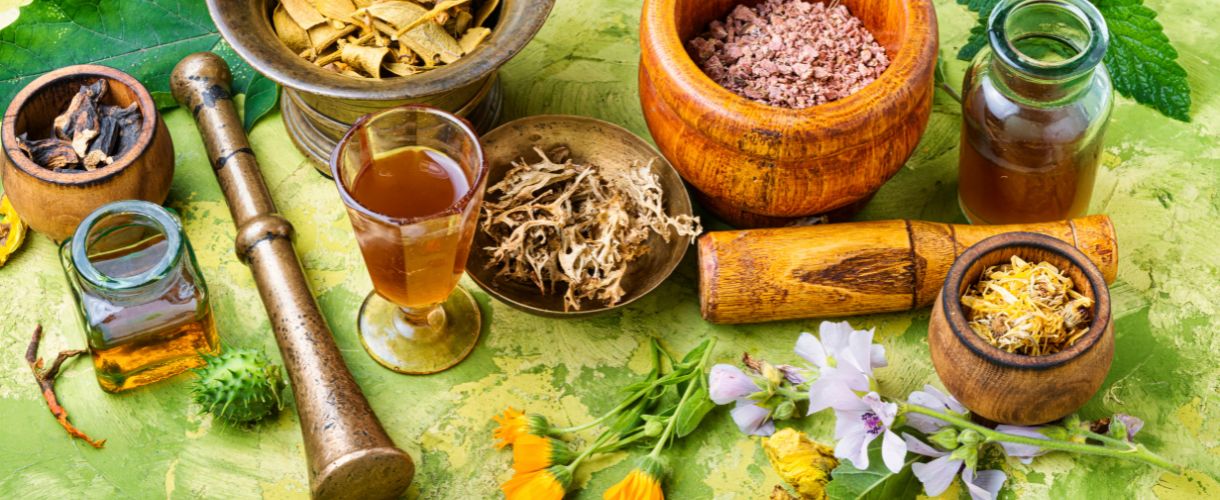
Kati Basti: Ayurvedic Oil Pooling Treatment for Lower Back Pain
March 13, 2019
Your Educational Qualifications
March 19, 2019Ayurveda is a complete system of health and medicine that incorporates a healthy lifestyle, herbs, food herapy, cleansing practices, marma points, massage, yoga and meditation. Health arises as a by-product when the following are balanced in the body: the doshas (biological forces), dhatus (tissues), malas (wastes), sense organs and a properly functioning mind.
Ayurveda works at a gentle, yet penetrating level. Through both their studies in this science and the development of intuitive skills, an Ayurvedic lifestyle consultant, practitioner or doctor is trained to see the overall picture, getting to the root of healing and health issues that other modalities may not have been able to diagnose. Ayurveda weaves together many tools in this work, using a combination of diagnostic principles together with Ayurvedic treatments, such as massage and energy healing, herbal medicine, detoxification to clear blockages that prevent the body from healing itself, rejuvenation and revitalisation treatments and medicines, food as medicine, sound, colour, mineral and gemstones, meditation and yoga to promote whole-being health in a gentle, compassionate way that honours an individual’s right to be. A unique aspect of Ayurveda’s healing is that it heals through teaching, providing an individual with tools to use on their own, empowering them to take charge of their own healing process. This process is invaluable for those who want to move forward in their lives and on their spiritual paths. Inevitably, an Ayurvedic lifestyle consultant, practitioner or doctor will invariably ask clients and patients about their stools as part of their assessment.
The Ideal Bowel Movement
The colour of an ideal bowel movement is medium brown, the colour of plain cardboard. It is evacuated from the body easily without straining or discomfort. It should be the consistency of toothpaste and be approximately 4 to 8 inches long. The faeces should enter the toilet water smoothly and fall slowly once they have penetrated the water. There should be little gas or odour.
Faeces that Sink Quickly
Rapidly sinking stools can indicate that a person isn’t eating enough fibre-rich food, such as vegetables, fruit, or whole grains, or that they are not drinking enough water. These stools are often dark because they have been sitting in the intestines for a prolonged period of time.
Pale Faeces
Stools that are pale or grey may be caused by an insufficient bile output due to conditions such as cholecystitis, gallstones, giardia parasitic infection, hepatitis, chronic pancreatitis, or cirrhosis. Bile salts from the liver give the stools their brownish colour. If there is decreased bile output, the stools are much lighter in colour.
Other causes of pale stools are the use of antacids that contain aluminium hydroxide in them. Stools may also become temporarily pale after a barium enema test. Pale stools may also be shiny or greasy, float, and be foul smelling, due to the presence of undigested fat in the stools (see soft and smelly stools).
Soft, Smelly Stools
Soft, foul-smelling stools that float, stick to the side of the bowl, or are difficult to flush, may mean there is increased fat in the stools, called steatorrhea. The stools are sometimes also pale. Although these stools may result from eating a high fat meal, if they take on this appearance regularly, there may be an underlying disorder.
Lipase, a digestive enzyme produced by the pancreas, and bile salts from the liver, are needed to break down and absorb fat. Any condition that results in decreased lipase or bile salts can cause steatorrhea, such as:
Pancreatic insufficiency
Chronic pancreatitis – may be because of alcoholism or gallstones. Symptoms may include bouts of abdominal or back pain, and later, abdominal bloating, changes in stools, weight loss, diabetes.
Pancreatic cancer
– the fifth leading cancer in the United States. Symptoms may include abdominal pain, weight loss, loss of appetite, metallic taste in the mouth, diarrhoea.
Sclerosing cholangitis
– symptoms may include fatigue, itchy skin, pain on the right side of the body, fever/chills, jaundice, dark urine, pale stools. Often associated with ulcerative colitis.
Choledocholithiasis
(obstruction of the bile duct by gallstones)
Bacterial overgrowth – unwanted bacteria in the small intestines de-conjugate bile acids interfering with fat absorption. Causes include hypochlorhydria, chronic stress, diabetes, immune deficiency, inadequate fibre or use of oral contraceptives or other medications.
Steatorrhea can also be caused by infections, medication, or conditions that disrupt the absorptive lining of the intestines, such as Crohn’s disease and coeliac disease. Fat soluble vitamin deficiencies may develop over time. The fat soluble vitamins are vitamins A, D, E, and K. Signs include: night blindness, acne, and lowered immune function (vitamin A deficiency) and excessive bruising or bleeding (vitamin K deficiency).
Mucous in the Stools
Whitish mucous in the stools may indicate there is an inflammation in the intestines. Mucous in the stools can occur with either constipation or diarrhoea. The more common causes of mucous in the stools includes bacterial overgrowth, food allergies or sensitivity. They are often easily corrected with dietary changes and supplements. With bacterial overgrowth, bloating and gas usually worsen after eating any sugar, whether it’s white sugar, bread, pasta, rye, rice, or milk (these all contain the sugar lactose). In contrast, people with food allergies and sensitivity react to specific foods.
Other causes of mucous in the stools are: ulcerative colitis, Crohn’s disease, celiac disease and diverticulitis. Ulcerative colitis, Crohn’s disease, and celiac disease are often accompanied by diarrhoea. Rectal bleeding can also occur with ulcerative colitis and Crohn’s disease.
If there is no underlying disorder present, mucous in the stools, abdominal bloating, and constipation are often helped by an increase in water intake and also by taking herbal or food demulcents, substances that form a soothing film which soothes the intestinal lining.
Demulcent herbs include slippery elm and marshmallow. A demulcent tea can also be made by adding one cup of hot water to one teaspoon ground flaxseeds and soaking them overnight. If the tongue has a thick coating on it with teeth-marks on the sides, greasy food, dairy products, and wheat may be contributing to mucous in the stools. Increasing the body’s capacity to digest these foods is often recommended, at least until the condition improves.
Bacterial or parasitic infections can also cause mucous in the stools. They are often accompanied by a sudden onset of diarrhoea, lower abdominal cramping, a sense of urgency and possibly blood in the stools.
Green Stools
The liver constantly produces, a bright green fluid, that is secreted directly into the small intestines or stored in the gallbladder. Bile is needed to absorb fats and fat soluble vitamins. It also helps soften stools and is responsible for giving stools their characteristic brown colour.
As bile makes its way through the intestines, it progressively changes colour, from green to yellow to brown, due to the action of bacteria in the large intestines on the bile salts.
Green stools often indicate that food has passed through the intestines faster than normal (decreased bowel transit time), before it could be changed from green to brown. Diarrhoea decreases bowel transit time, so any condition that causes diarrhoea can result in green stools.
Other causes of green stools include: The use of laxatives, antibiotics; medication side effects; food poisoning; coeliac disease; ulcerative colitis; Crohn’s disease; malabsorption; irritable bowel syndrome; bacterial overgrowth; infectious diarrhoea – especially salmonella and giardia; traveller’s diarrhoea; cancer. Food and supplements that can cause green stools include: chlorophyll; iron supplements; algae.
Loose Stools
In Ayurvedic medicine, loose stools, abdominal bloating, a lack of energy and a poor appetite can be signs of a condition known as aama, which is also linked with tiredness and weak digestion brought on by stress, overwork and a poor diet.
Other symptoms of aama include: mental fogginess; bloating, gas, loose stools; fatigue; a poor appetite; loose stools with a strong odour; symptoms become worse with stress; undigested food in the stools; difficulty finishing a bowel movement.
Diet can worsen aama, specifically eating before the body is hungry and consuming too much food that is believed to cause stickiness, cold and dampness in the body, such as: fried or greasy foods; sugar; raw fruit and vegetables; cold drinks.
Dietary treatments involve eating warm food, spices, ginger tea and chai, which are warming. Besides aama, other allopatic conditions that cause loose stools or chronic diarrhoea include: gluten intolerance; lactose intolerance; pancreatic insufficiency; bile salt deficiency, celiac disease; Whipple’s disease; ulcerative colitis; Crohn’s disease; cancer. To Ayurveda, all these are symptoms of aama present in the system. If food sensitivity is involved, treatment includes increasing the digestive fire, to digest the aama and then rotating the aforementioned foods. Although symptoms may improve, it’s also necessary to identify the cause of the food
sensitivity.
Pencil Thin Stools
Like loose stools, stools that are pencil thin can be also be caused by digestive problems and aama. Other symptoms of a presence of aama include mental fogginess, bloating, gas, loose stools, fatigue, a poor appetite, loose stools with a little odour, symptoms that worsen under stress, undigested food in the stools, and difficulty in finishing bowel movements.
Eating certain food to excess is thought to worsen aama. Offending foods include fried or greasy food, raw fruit and vegetables, and cold drinks, as these cause cold and dampness in the body. Dietary treatment involves eating warm, cooked food and drinking warm water or ginger tea and spices which are also warming.
Pencil thin stool can also be caused by bowel obstructions. Benign rectal polyps, prostate enlargement, colon or prostate cancer are some of the conditions that can cause obstructions.
Infrequent Stools
With constipation, there is the passing of infrequent or hard stools with straining. Although conventional medicine considers having a bowel movement every second day as normal, for optimal health and digestion many alternative medical practitioners believe there should be at least one bowel movement a day.
Some people can develop anxiety about the frequency of their bowel movements and self-prescribe laxatives and strong herbal ‘dieters’ tea to try to have a bowel movement every day. This is strongly discouraged because it can injure the intestines and make them reliant on laxatives for bowel movements. It also results in vitamin and mineral deficiencies and promotes the development of eating disorders. If you are concerned about bowel regularity, book in for an Ayurvedic consultation.
Most commonly, constipation is caused by a lack of fibre in the diet. Sprinkling 1-3 teaspoons of ground flaxseeds on your meals, choosing whole grains instead of refined grains and eating plenty of vegetables and fruit can increase your fibre intake. Simple psyllium seeds can also help some people, however not all.
An ayurvedic herbal remedy called Triphala (see link to our online shop below) is considered to be a gentle laxative that can be used on a long term basis, unlike some of the more harsh, habit-forming alternatives. Triphala is a combination of three different types of fruit, one of which is amla (gooseberry), a fruit naturally high in vitamin C. Triphala improves bowel tone, strengthens the digestion, and enhances liver and gallbladder function. It is used for constipation, detoxifying the body and a broad range of conditions. Triphala is contraindicated for people with chronic liver or kidney diseases, pregnant or nursing women, or people taking blood-thinning medication. It can be purchased from Health Institute Australia in powder or tablet form.
If an increased fibre and water intake worsens the condition of constipation, the problem may be due to insufficient bile output. This is because bile makes stools soft by allowing water to bind with them. Nutritional supplements choline, methionine, and artichokes all increase bile output, but it’s important to seek professional help before trying any treatments to identify the cause of the decreased bile output.
Constipation can also be caused by the following underlying conditions: magnesium deficiency; diabetes; hypothyroidism; Parkinson’s disease; multiple sclerosis; scleroderma; amyloid; colon cancer; a side effect of medication – most common are antidepressants and codeine.
If constipation occurs suddenly, see a doctor immediately as it can be the sign of a bowel obstruction, nerve paralysis, drug toxicity, an infection, or another serious disorder.
Pellet Stools
Pellet stools are stools that come out in small, round balls. They are associated with constipation and are often brought about by stress. A lack of exercise can worsen the problem. Symptoms include: feeling bloated all the time; copious amounts of gas, which is often odourless. Symptoms are aggravated by stress. Symptoms improve with exercise. Symptoms are worse before or during menstrual periods.
An excessive intake of red meat, wheat, sugar and alcohol causes congestion and heat in the body and worsens the condition. Reducing an intake of these foods can help. Ayurveda also recommends a detoxifying dietary plan. Herbs that reduce stress and help digestion by easing intestinal bloating and cramping include chamomile and lemon balm. Both can be drunk as teas. Stress reduction practices, such as yoga, breathing, massage therapy, and aromatherapy, are helpful.
Other helpful tips include:
– drink enough water
– don’t suppress the urge to have a bowel movement
– exercise
Yellow Stools
Yellow stools can indicate that food is passing through the digestive tract relatively quickly. Yellow stools can be found in people with GERD (gastroesophageal reflux disease). Symptoms of GERD include heartburn, chest pain, a sore throat, a chronic cough and wheezing.
Symptoms are usually worse when lying down or bending forward. Food that can worsen GERD symptoms include peppermint, fatty foods, alcohol, coffee and chocolate. Yellow stools can also result from insufficient bile output. Bile salts from the liver give stools their brownish colour. When bile output is diminished, the stools often first appear yellow. If there is a greater reduction in bile output, the stools lose almost all of their colour, becoming pale or grey. If the onset is sudden, yellow stools can also be a sign of a bacterial infection in the intestines.
Dark Stools
Stools that are almost black with a thick consistency may be caused by bleeding in the upper digestive tract. The most common medical conditions that cause dark, tar-like stools includes duodenal or gastric ulcers, oesophageal varices, Mallory Weiss tear (which can be linked with alcoholism), and gastritis. Certain food, supplements and medication can temporarily turn stool black.
These include: bismuth (e.g. Pepto bismol); iron; activated charcoal; aspirin and NSAIDS (which can cause bleeding in the stomach); dark food such as black licorice and blueberries Dark stools can also occur with constipation. If you experience this type of stool, you should see your doctor as soon as possible.
Bright Red Stools
When there is blood in the stools, the colour depends on where the blood is coming from in the digestive tract. Blood from the upper part of the digestive tract, such as the stomach, will look dark by the time it reaches the rectum and exits the body as a bowel movement. Blood that is bright or dark red, on the other hand, is more likely to have come from the large intestines or the rectum.
Conditions that can cause blood in the stools include haemorrhoids, anal fissures, diverticulitis, cancer of the colon and ulcerative colitis, among others. Eating beetroot can also temporarily turn the stools and urine red. Blood in the stools doesn’t always appear bright red. Blood may also be present in the stools but not be visible. This is called ‘occult’ blood. A test called the faecal occult blood test is used to detect hidden blood in stools.
Note: Speak to your doctor or health care practitioner about any changes or abnormalities in your bowel movements.






